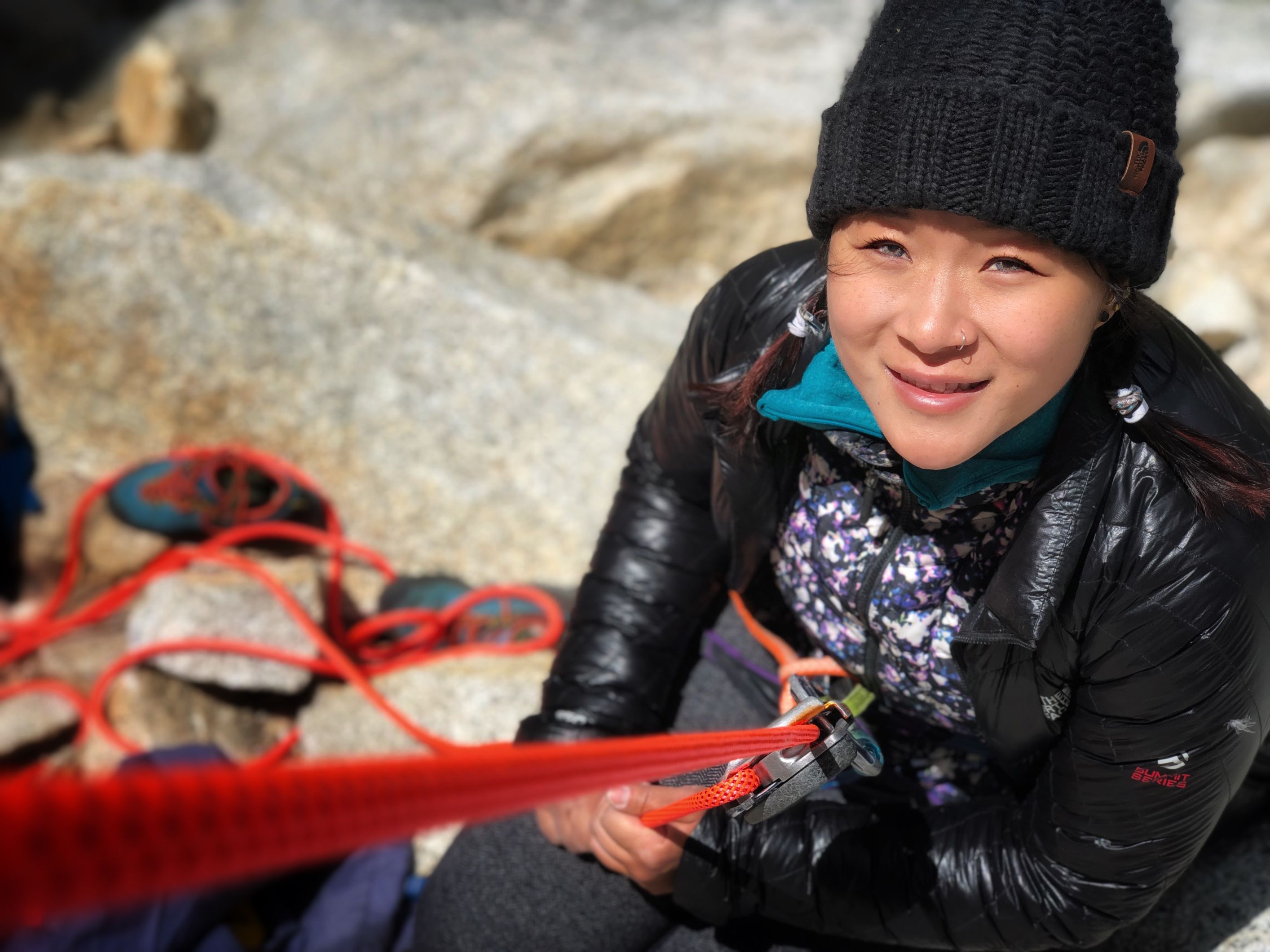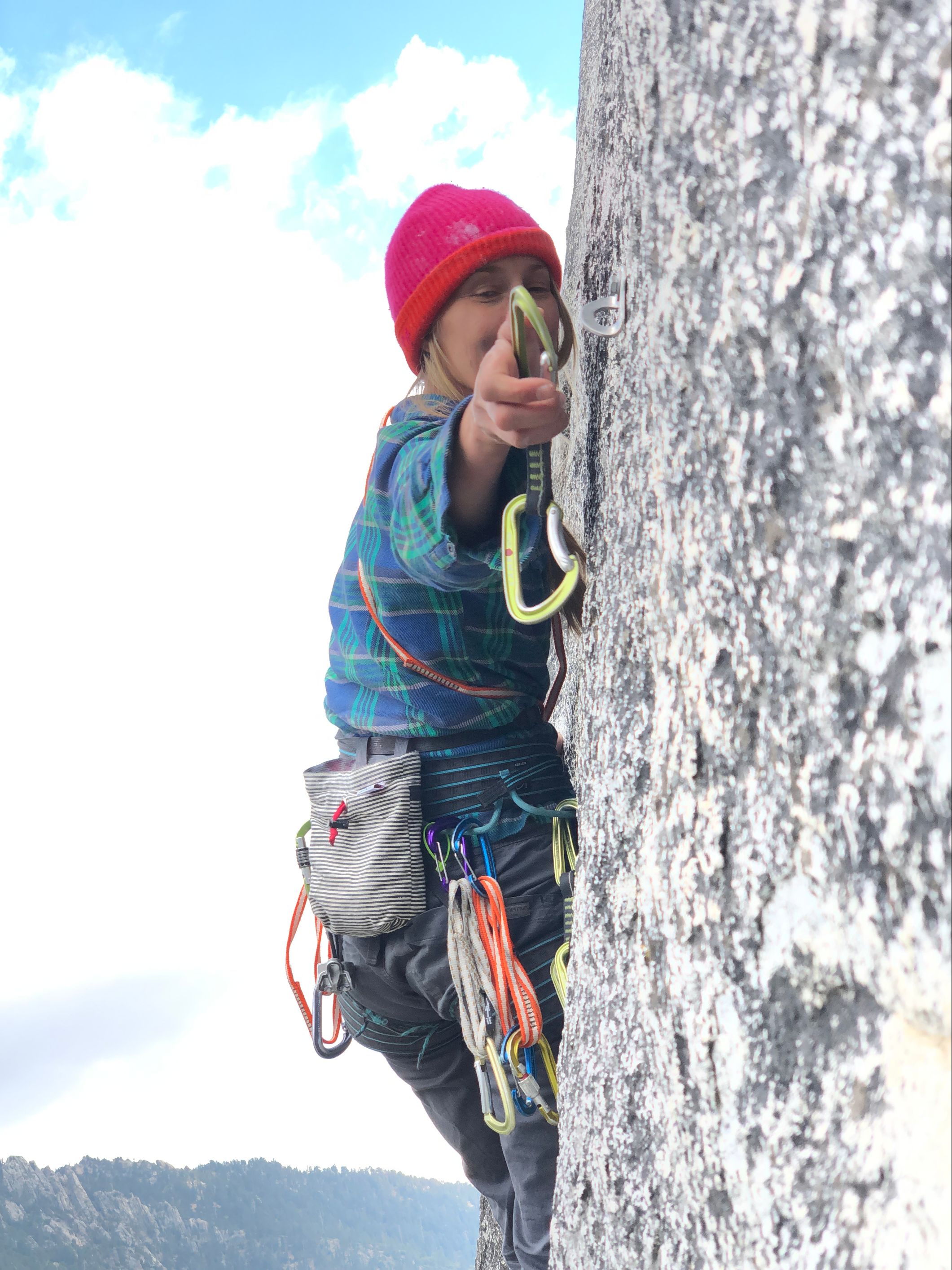 The Top 10 Essential Terms Every Climber Should Know
The Top 10 Essential Terms Every Climber Should Know
By Matt Samet
 Photo Credit: Chris Weidner
Photo Credit: Chris WeidnerIn climbing, communication is everything. We need to know, at all times, what our partner is doing, whether she’s on the sharp end, up at an anchor getting ready to lower, or above us on a multi-pitch climb preparing to belay us up. Miscommunication can cause and certainly has caused accidents, including fatal ones, all preventable had there been a clear conversation about ropework and logistics on the ground, or had the climber and belayer been in better communication on the rock, including using concise, agreed-upon commands.
The longer I’ve climbed, the more I’ve noticed drift from the tried-and-true belay commands, or people just improvising things on the spot: “I’m at the anchor now!” or “On you!” or “On me!” or “Safe!” or “Secure!” or other oddities that are just vague enough to be dangerous, should they be misconstrued by any member of a ropeteam.
So, in the interest of distilling things down to their safest, most basic essence, here in no particular order is a list of the Top 10 Essential Terms Every Climber Should Know, most of them belay and ropework focused. Whether you’re just starting out or have been climbing for years but gotten sloppy with your terminology, these words and their definitions are equally applicable. Remember, gravity doesn’t sleep and the ground never lies.

Photo Credit: Jen Hook
• “Take!”: Back in the day, we used to say “Tension!” when we wanted to rest on the rope. But hey, in those moments of pumped panic, perhaps two syllables was just too much to ask of an exhausted climber, and the command was somehow shortened to “Take!” I suspect it’s shorthand for “Take in the rope” or “Take me”; in either case, this brief, to-the-point, easily distinguishable chunk of sound gets the message across. The belayer needs to reel slack in, sit back on the rope, and take the climber’s weight—ASAP.
Variations: Tension, Take it, Take it in, Just take [uttered with weary resignation]

• “Falling!”: You don’t hear this one as much anymore, perhaps because of the prevalence of belay-assist devices, which by reducing the risk of belayer error have made it more pedestrian to take whippers—now we just sort of let go and fall. But back when I started, when we were using some combo of tube-style devices, figure-8s, and even hip belays, it paid to give your belayer a heads-up that you were either airborne or soon to be airborne. This made sure that your belayer was braced and ready to arrest your fall, or that any inattentive belayer who was daydreaming about his project or snacking could get that pesky brake hand back on the rope!
Variation: Aaaaaaahhhhhhh—shit!
• “Slack”: This term’s been around a minute, and has the same meaning now as when I began climbing thirty years ago: Pay out some extra cord, because the rope is either too tight and pulling on you or because you need an extra armful or two of cord to tie a knot, look around on a ledge for an anchor, etc.
Variations: Slack me out [say this to your belayer when you’ve clipped in hard to protection while hangdogging and want to unweight the rope, to give your belayer a rest ]
• “Clipping”: At first glance, this might feel like a redundant term—why would you tell your belayer you’re clipping when she can look up and clearly see that you’re clipping? However, on routes where you traverse out of sight, go over a roof or bulge, or are otherwise no longer visible to your belayer, this is actually a useful term, because it prepares your belayer to give you slack, without wondering whether or not you’re falling when there’s sudden tugging on the rope. I’ll even use it when I’m in plain view of my belayer, on tough clips where I know I’m going to need slack super-rapidly; the key is to say “Clipping” before you start pulling up rope, so that it doesn’t lock up in the belay device.
Variation: Clip

Photo Credit: Jen Hook
• “Up rope”: When there’s too much slack in the rope but you don’t necessarily want to hang, whip out this trusty command. Say it with enough force and you belayer might just give you a “gentle take”—you’re not quite resting on the rope but you’re still free climbing, right? Kinda…sorta. Right?!
Variation: Take in a bit

• “Dirt!”: Kind of like “Take!”, this one emerged as shorthand for “Lower me”—what you tell your belayer when you’ve clipped a top anchor or piece of pro and want to lower off. Though I must confess, at least in my own climbing, I mostly seem to use it when I’m frustrated and just want to lower off some climb that’s I’m flailing on—so I bark “Dirt!” with the goal of getting away from said “horrible” route as quickly as possible, all the while refusing to acknowledge that my own shortcomings and impatience have made me fail.
• “On belay”: A fundamental command, used to let your climber—be she a leader or a second—know that she’s on belay and can climb at any time.
Variation: On, You’re on
• “Off belay”: An equally fundamental command, used to let your climber—usually the leader—know that you, as the belayer, are no longer securing the rope and have removed yourself from the system. The proper use of these three simple syllables could do away with so many lowering accidents—the “classic” scenario in which the climber threads the top anchor thinking her belayer is going to lower her, but the belayer has in the meantime taken the device off the rope and walked away, thinking the climber will rappel.
Three points on this: A) You should always discuss what the anchor plan will be before the climber leaves the ground, B) It is nonetheless incumbent upon the belayer to always keep the climber on belay until notified otherwise—with the command “Off belay” by the leader, and C) As the leader, only ever call “Off belay” when you really mean it—don’t just say it when you’re clipped in hard to a top anchor and are pulling up slack to thread the chains, as your belayer will likely take you at face value and remove her device from the rope. Which, if you’re expecting to be lowered or otherwise held by the rope, could kill you.
Variations: Off, You’re off, I’m off

Photo Credit: Jen Hook
• “Rope!”: This one’s become a bit of a lost art, but that doesn’t mean it’s any less essential, including in rock gyms where I all-too-infrequently hear it being said. In a nutshell, say this any time you’re pulling a rope down through an anchor, to let other climbers (and maybe crag dogs…) on the ground know to relocate or look up in anticipation, so as not to get whacked by the falling cord or whipped with a rope end.
• “Rock!”: This all-purpose term should be the first thing out of your mouth for any dropped item, be it a piece of loose rock, a carabiner, a rock shoe, etc. It makes climbers on the ground look up and move regardless of what’s hurtling toward them—try saying “Carabiner!” and see what sort of reaction you get at the cliff. People will just think you’re a weirdo: “Why’s he naming climbing g—oof, thud, ow!”
 Photo Credit: Jen HooK
Photo Credit: Jen HooK
Leave a comment